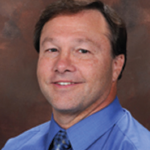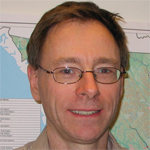“My goal is to become a successful, independent clinical researcher who develops effective and feasibly implementable support interventions to help people with rheumatic diseases … cope with and manage their conditions,” she says. “Ultimately, if the SSLED Program is effective in SSc, I hope to modify the program and expand its use into other rheumatic diseases.”
ARHP Distinguished Educator Award
 Scott Hasson, EdD, PT, FACSM, FAPTA
Scott Hasson, EdD, PT, FACSM, FAPTA
Editor, Physiotherapy Theory and Practice; Executive Board Member, Scientific Advisory Committee for the Rheumatology Research Foundation, the ACR
Background: Over 30 years of teaching, Dr. Hasson has seen students change. “There’s more potential to be self-centered,” he says. “I’ve seen individuals who thought it was about them and not their patient. I tried to really talk with individuals to get them to understand, if you’re going to come into this profession or any health-related profession, go ahead and leave the tiara at the door. It really is about the patient, not you.”
That’s what Dr. Hasson focused on until his retirement from Augusta (Ga.) University last year. Over his career, he taught or led physical therapy departments at Texas A&M University, the University of Texas and the University of Connecticut. He holds a master’s in physical education and a doctorate in exercise science.
Dr. Hasson has published 80 peer-reviewed research articles, presented more than 150 papers at sports medicine and rehabilitation medicine meetings, and wrote a textbook, Clinical Exercise Physiology. He has been the editor of Physiotherapy Theory and Practice, an international journal, since 1994, and his research received funding from the National Institutes of Health, the U.S. Department of Education and NASA.
Q: What about physical therapy said to you, “This is what I’ll enjoy doing the next 30 years?”
A: This was in the early 1980s, and PTs and OTs didn’t really know much about exercise then, so I thought, “This should be a profession I could make an impact on.” So I called Helen Hislop, who’s a famous physical therapist. She said, “Yeah, this is what you need to do.” So I went to Downey, Calif., and met with her, and that was my move to physical therapy.
Q: How has the medical field’s general move toward encouraging more physical activity made your job easier?
A: Yeah, it was funny, up until almost the mid-1990s, individuals were still suggesting that … [people] with rheumatoid arthritis shouldn’t be active, that they not take part in resistance/strength training. It was a challenge. But I think we’ve overcome all those hurdles now, and practitioners realize it’s an important aspect.



